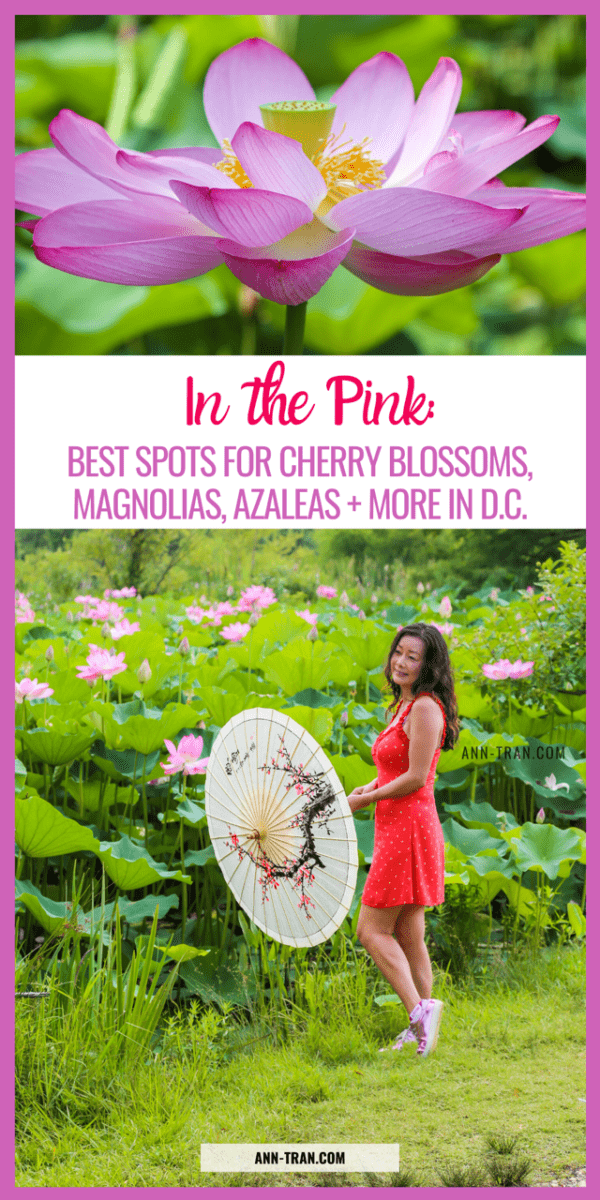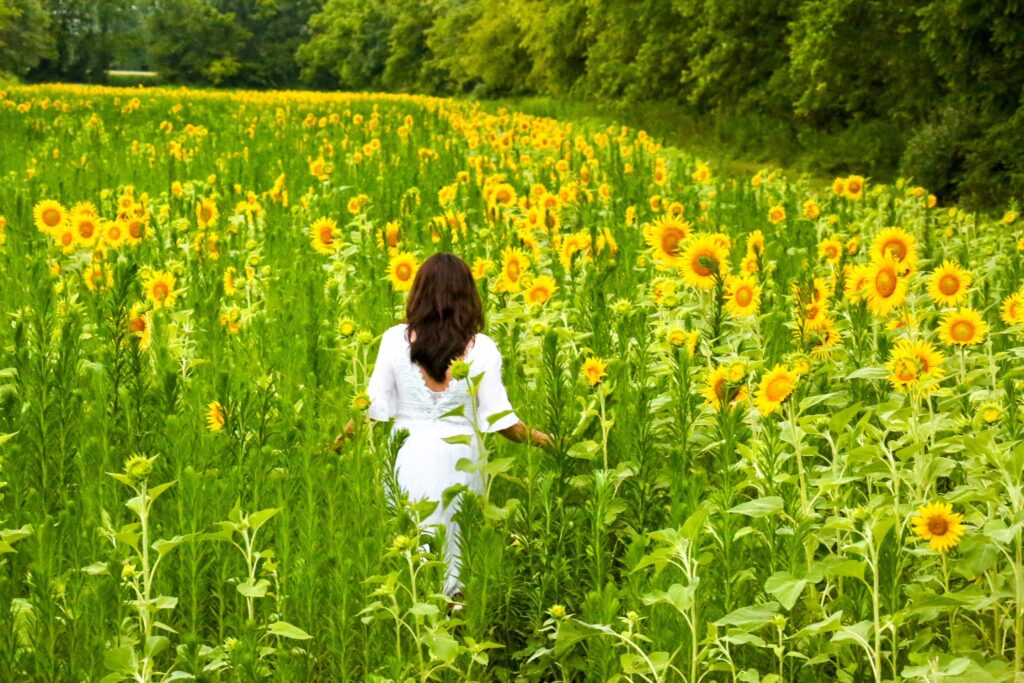Where to find pink blossoms in DC Area?
This past month, I have been sharing the pink, lavender, and assorted blooms of the DMV area. (DMV = D.C., Maryland, Virginia, for all you first-timers.) Most folks recognize the flower names I share from my daily nature walks, such as wisteria, peony, and cherry blossoms.
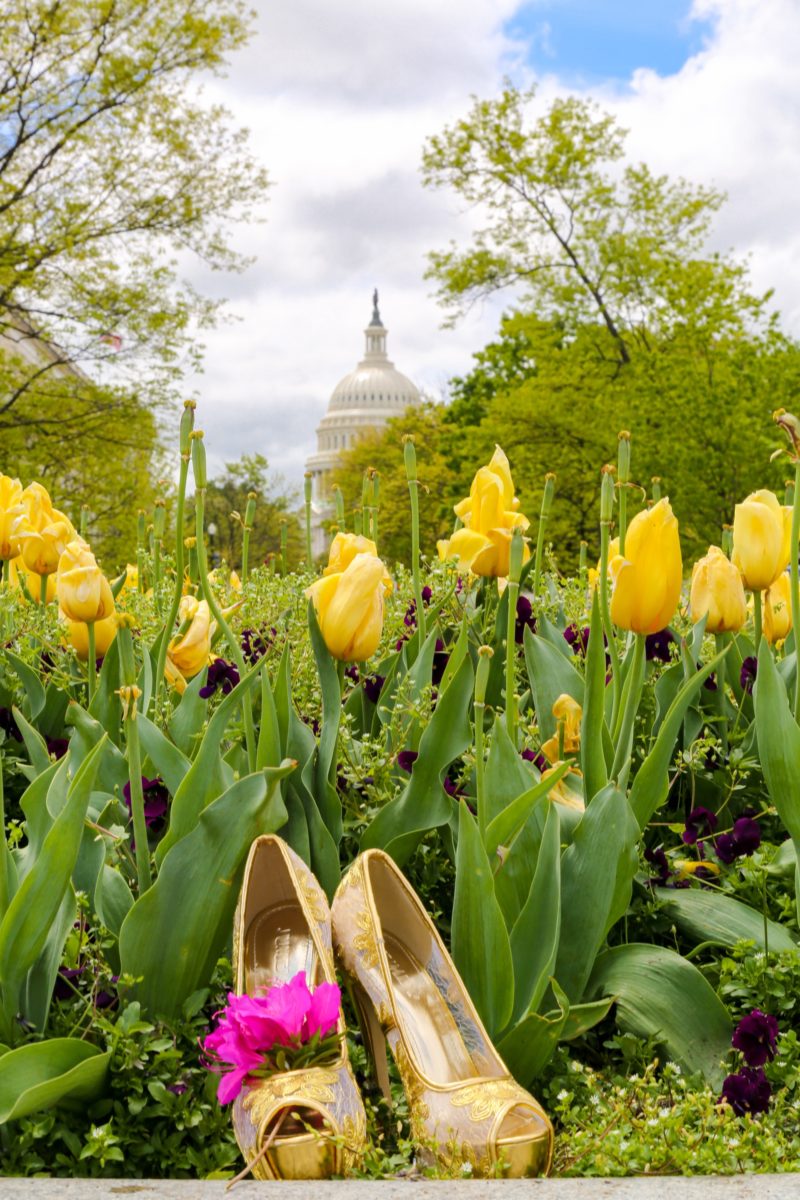
If you’d like to learn some fun facts about these annual spectacular blooms, read on. I found some fun and interesting data. In addition, I will divulge the best viewing spots for your visit to the DMV next spring. These are the hidden gems tourists would not know about in my hometown. What is great about these locations is that aren’t quite so crowded, say, like the National Mall. Plus, don’t you want to explore areas where you won’t need to edit the crowds out of your photos?
-
Table of Contents
Azalea
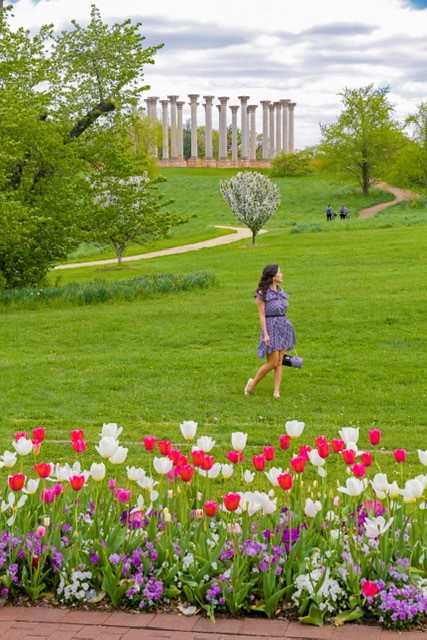
Some say “azalea,” some say “rhododendron.” Technically, azalea are species of rhododendron, a member of the Ericaceae family. Either way, these acid-loving plants paint a pastel portrait of pink and purple throughout Washington D.C. every spring. Wander the fields of 446 acres of loveliness at the United States National Arboretum to find a variety of azaleas along with other colorful blooms. Did you know that azaleas love coffee? Use your leftover grounds for fertilizer in your home garden.
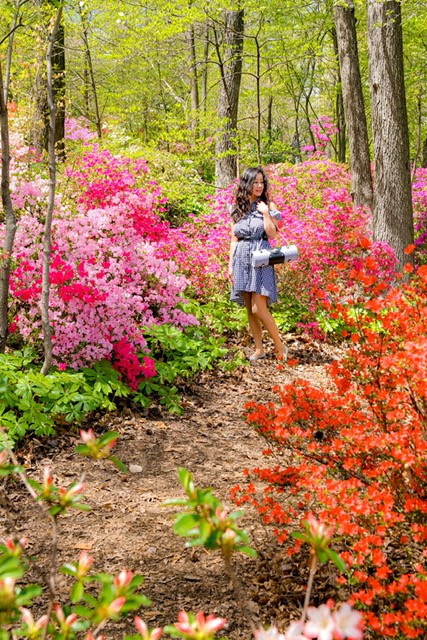
Best location: United States National Arboretum
alternatively Hillwood Estate, Museum & Gardens
Bloom times: February – September (approximate bloom dates)
-
Cherry Blossoms
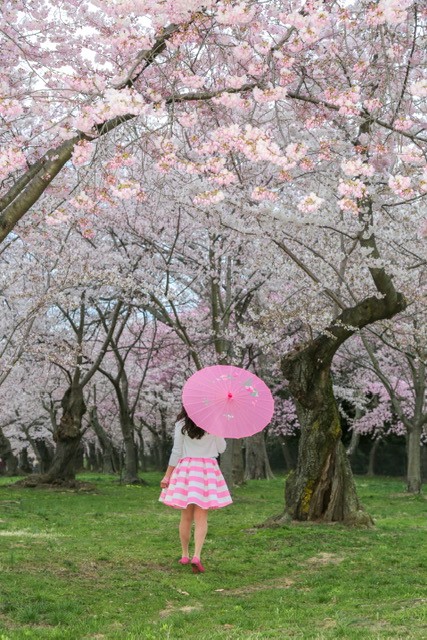
History doesn’t tell us what kind of cherry tree George Washington cut down, but did you know that there are more than 100 varieties? The light pink to white blossoms are the most recognizable colors, and there are trees with yellow or green blossoms (really!) as well as dark pink ones. Once open, blossom colors can change, for example, going from white to pink over the course of a few days.
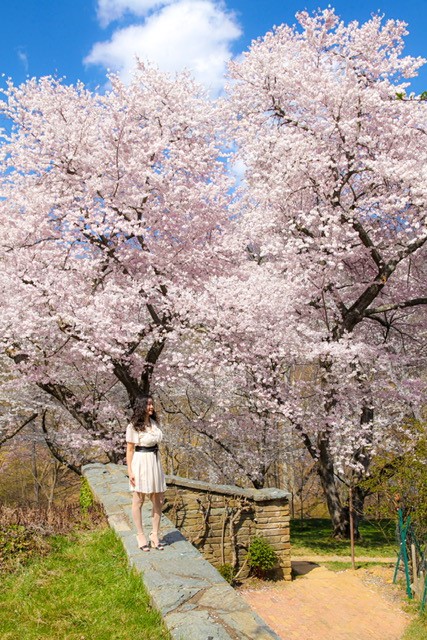
For a different point of view, visit the 53-acre Dumbarton Oaks, which sits at the highest point in Georgetown. Added bonus: Their landscape changes every week, check the Web site for which flowers will bloom next.
Best location: Tidal Basin, alternatively Dumbarton Oaks
Bloom time: On average, DC’s cherry blossoms bloom around the last week of March into the first week or April.
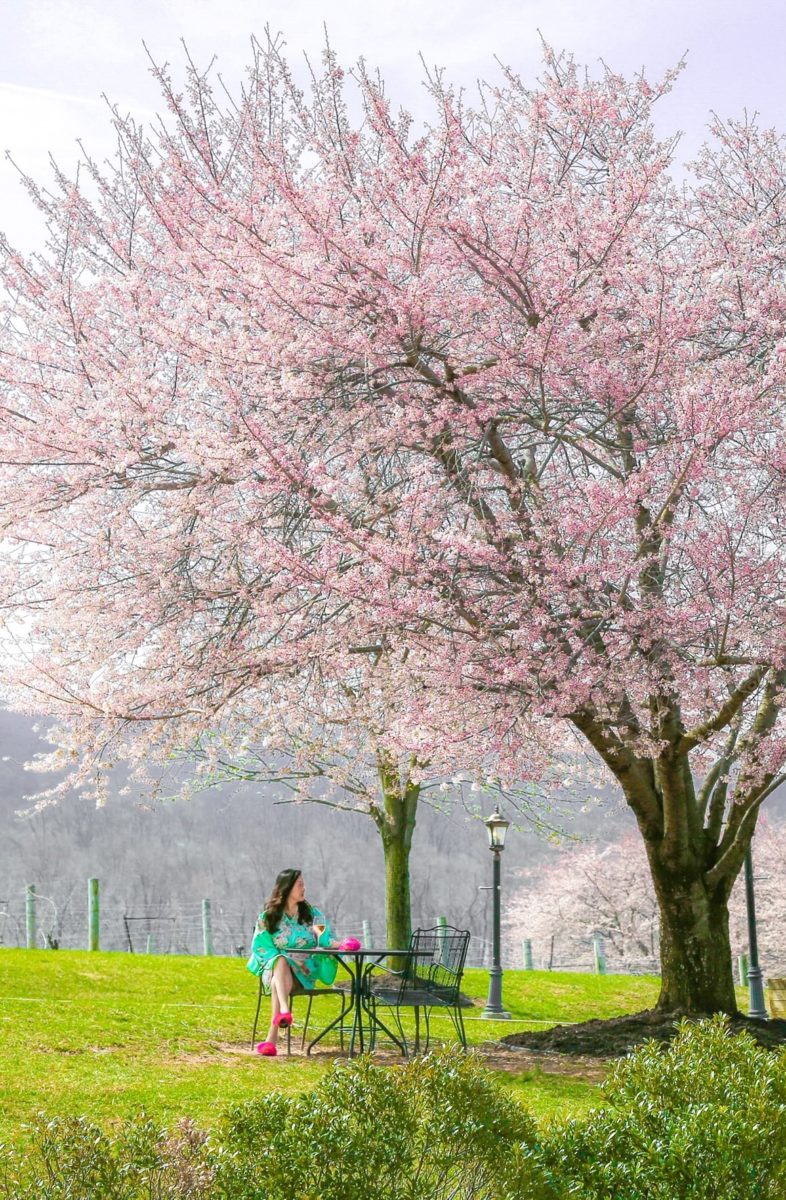
-
Magnolias
If you love magnolias, visit the Enid A. Haupt Garden, a 4.2-acre public space in the Smithsonian mosaic.
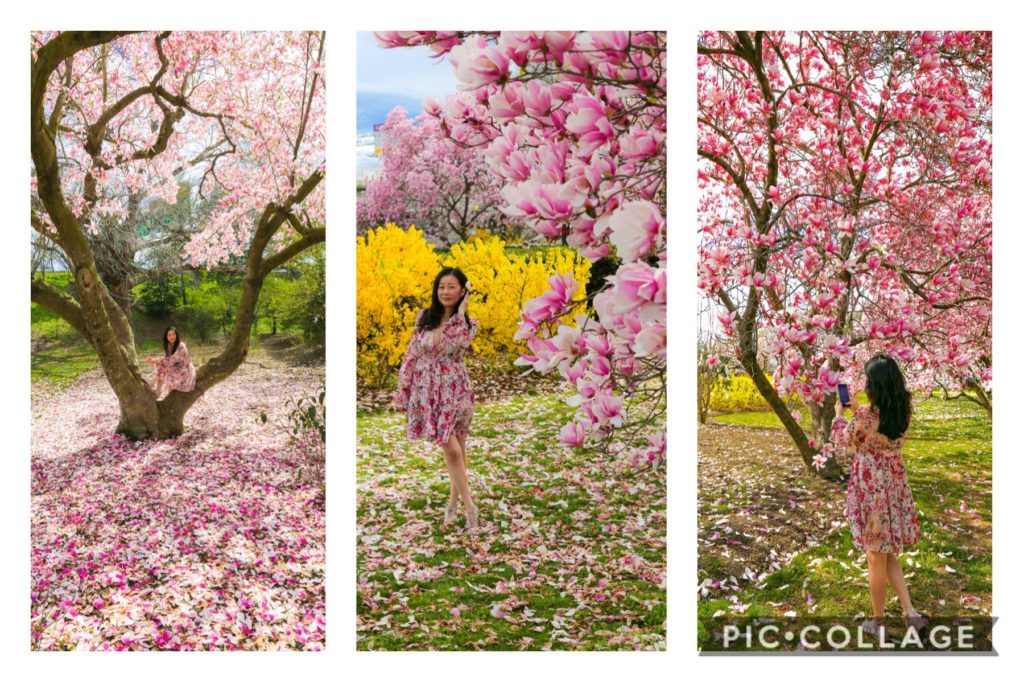
Did you know, sad but true, that of the 304 species of wild magnolias around the globe, almost half of them are in danger of extinction? Yes, according to the IUCN Red List, 147 magnolia species are on that list. Did you also know that it may take the magnificent magnolia 10 years to flower from seed? I think it’s worth the wait! Scientists have guesstimated the age of magnolias being at least 20 million years old, thanks to data from fossils.
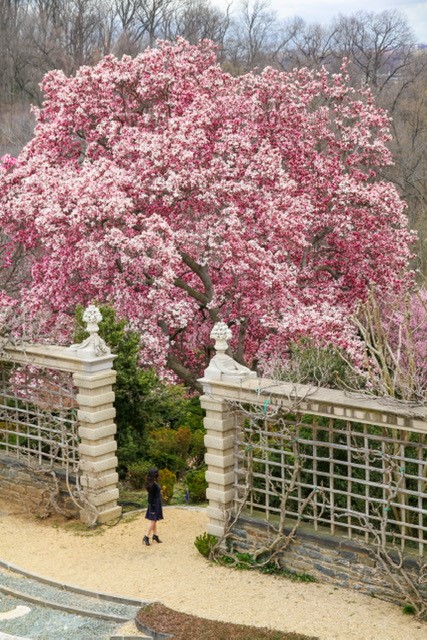
Best location: The George Mason Memorial, located in East Potomac Park near the Thomas Jefferson Memorial or Enid A. Haupt Garden
Bloom time: Magnolias can bloom anytime between February and June.
4. Peony
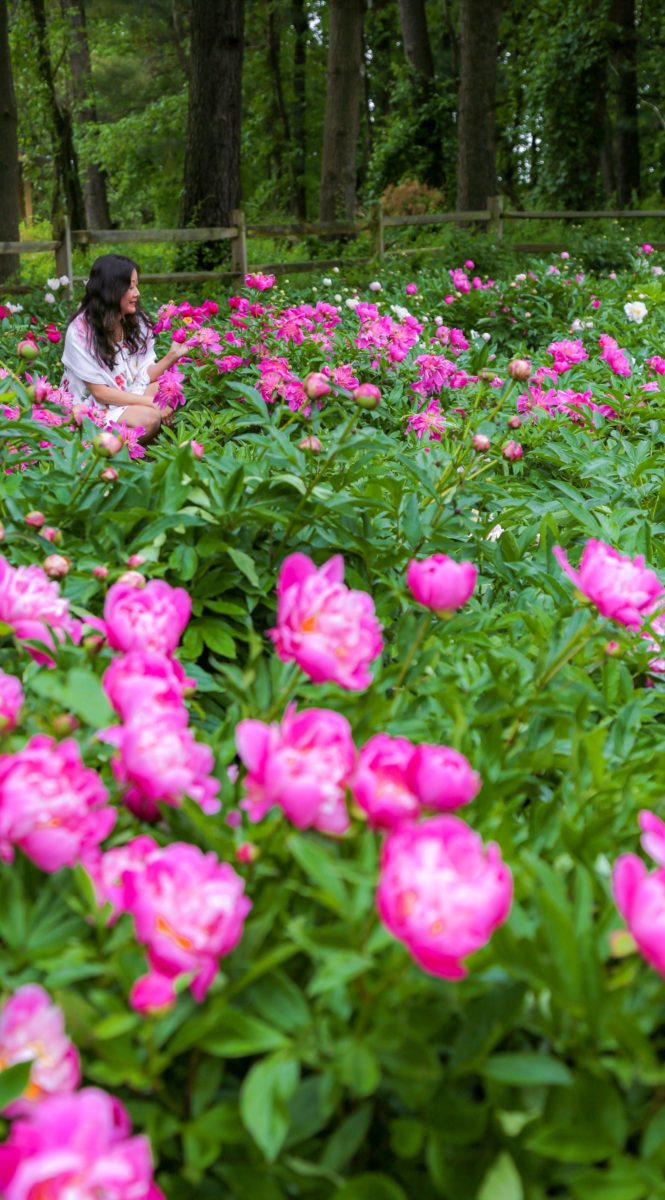
I find it surprising peonies aren’t more popular. Their brilliant colors and thick flowers are so beautiful. Here’s a secret: Not too many people know about the crown jewel of a peony garden at Seneca Creek Park in Maryland. Once a peony is planted, it can live to be 100 years old! Did you know that? How about peonies are the floral symbol of China and the state flower of Indiana?
Best location: Seneca Creek Park in Maryland
Bloom time: Peonies bloom in late spring – early summer
5. Robinson Crabapple Tree
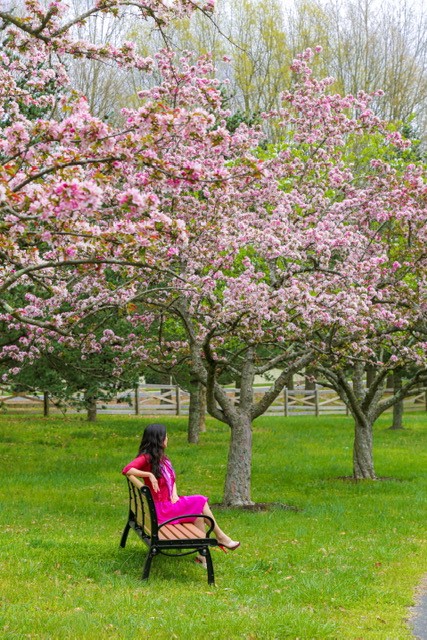
The Robinson Crabapple blossoms are often confused with cherry blossoms, and it’s easy to see why. Both are gorgeous. The Robinson Crabapple Tree is part of the Malus species, or flowering crabapple. Visit the Meadowlark Botanical Gardens on a weekday, and you can pretty much explore the 95 acres of ornamental display garden by yourself.
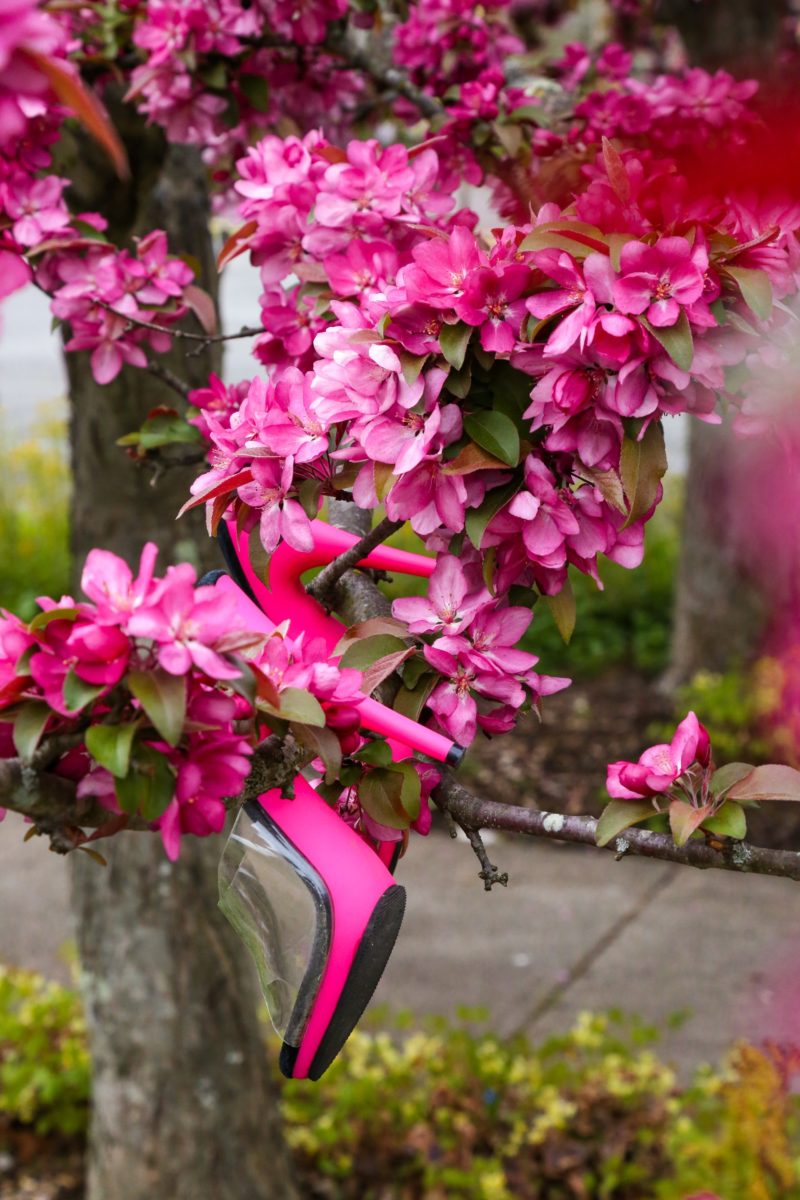
Check their seasonal highlights and fees here.
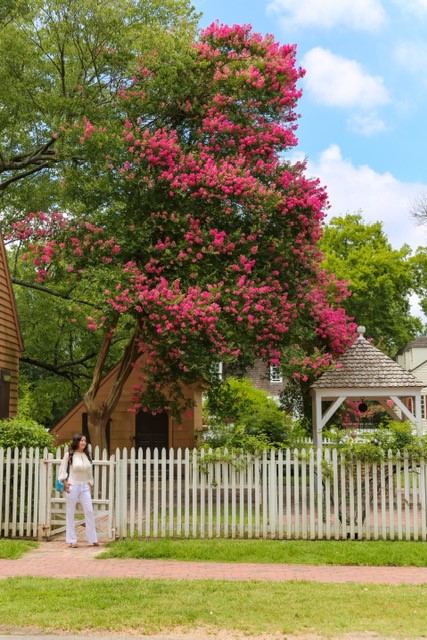
Best location: Meadowlark Botanical Gardens in Vienna, Virginia; alternatively, Williamsburg, Virginia
Bloom time: Flowering Crabapple Trees-Four Seasons of Beauty
6. Sunflowers
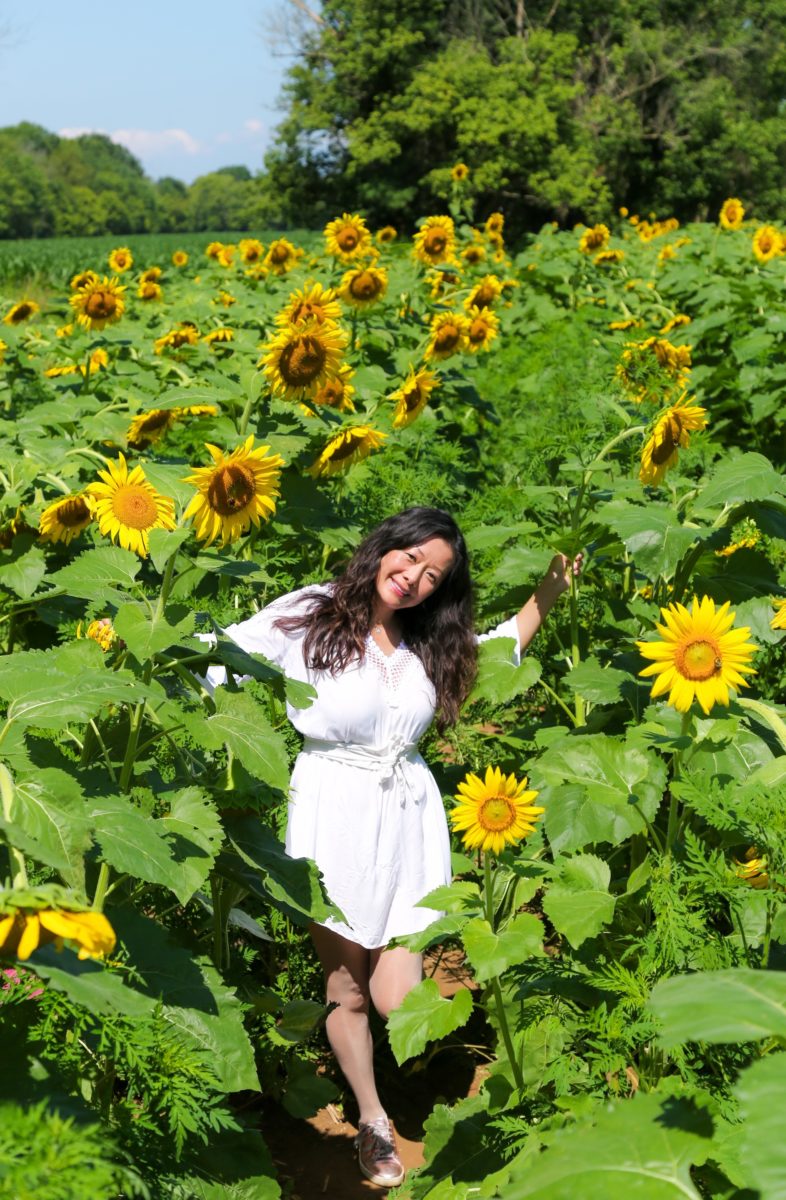
Did you know that a sunflower is not a single flower? Each one is actually thousands of miniature flowers. They sure come together nicely, don’t they? There are about 70 species of sunflowers. Don’t think of them as just pretty faces. Sunflowers are bio-accumulators and help in phytoremediation, meaning they absorb toxins in the ground such as pesticides and other contaminants, resulting in cleaner soil.
Best location: McKee-Beshers Wildlife Management Area
Bloom time: July
7. Tulips
Yes, it’s Holland in Virginia! Synonymous with spring, tulips offer a colorful welcome to warmer weather.
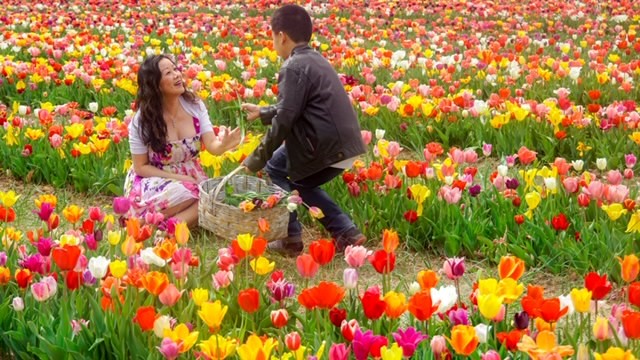
Check the Burnside Farms schedule around mid-April for the power bloom. You also can pick tulips at Burnside Farms.
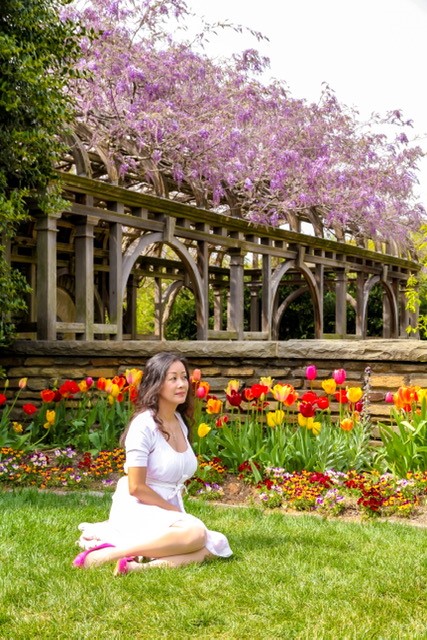
Best location: Burnside Farms, alternatively Dumbarton Oaks
Bloom time: April
Spring season is now closed. Check this summer for their summer sunflowers!
8. Waterlilies
Tropical water lilies come in two kinds — day bloomers and night bloomers.
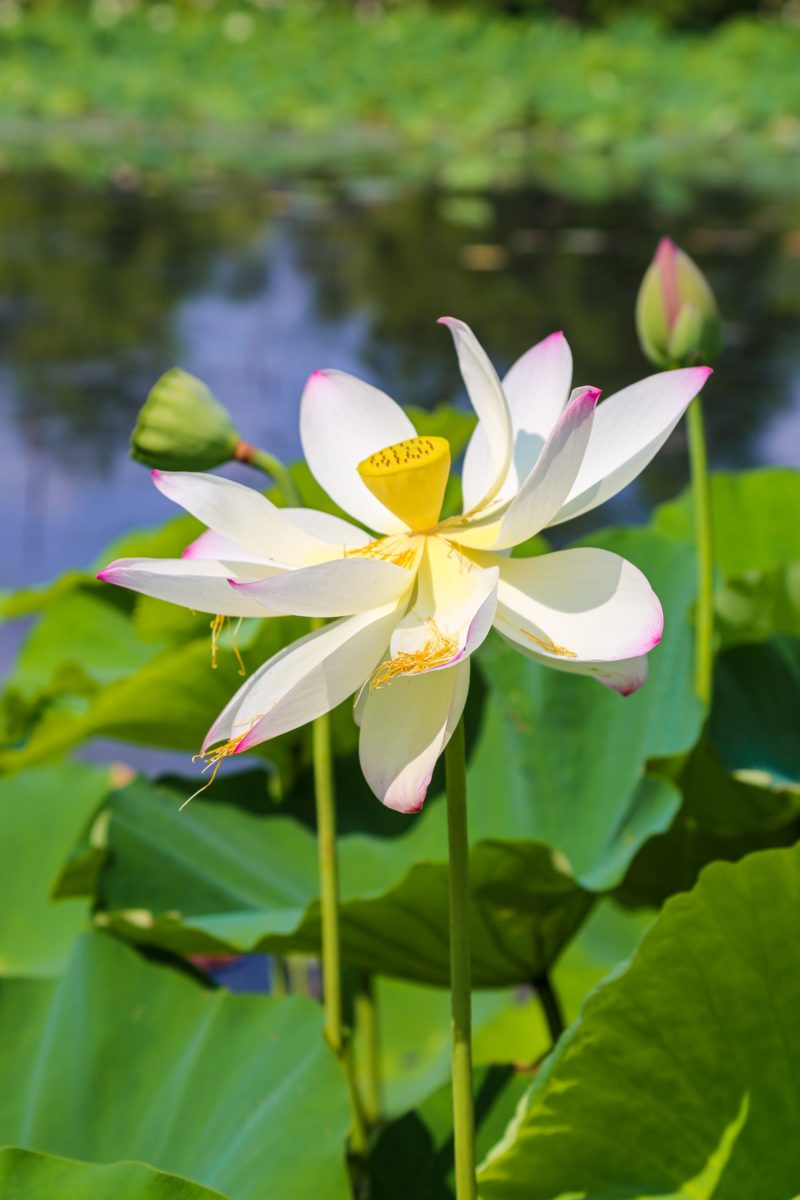
At the Kenilworth & Aquatic Center National Park, there are large flowers, and various colors including blue and purple. The peak is typically in July and August. Visit the park service Web site here.
Best location: Kenilworth Park & Aquatic Gardens #findyourpark
Bloom time: July (Lotus and Water Lily Festival)
9. Wisteria
Wisteria Hysteria — that best describes this stunning cascade of delicate flowers. Often mistaken as a tree, wisteria is from the pea family. The oldest known wisteria is the 145-year-old purple plant carpeting 6,500 square feet at Ashikaga Flower Park in Japan. I’ve put that on my list of Places to Go, Things to See.
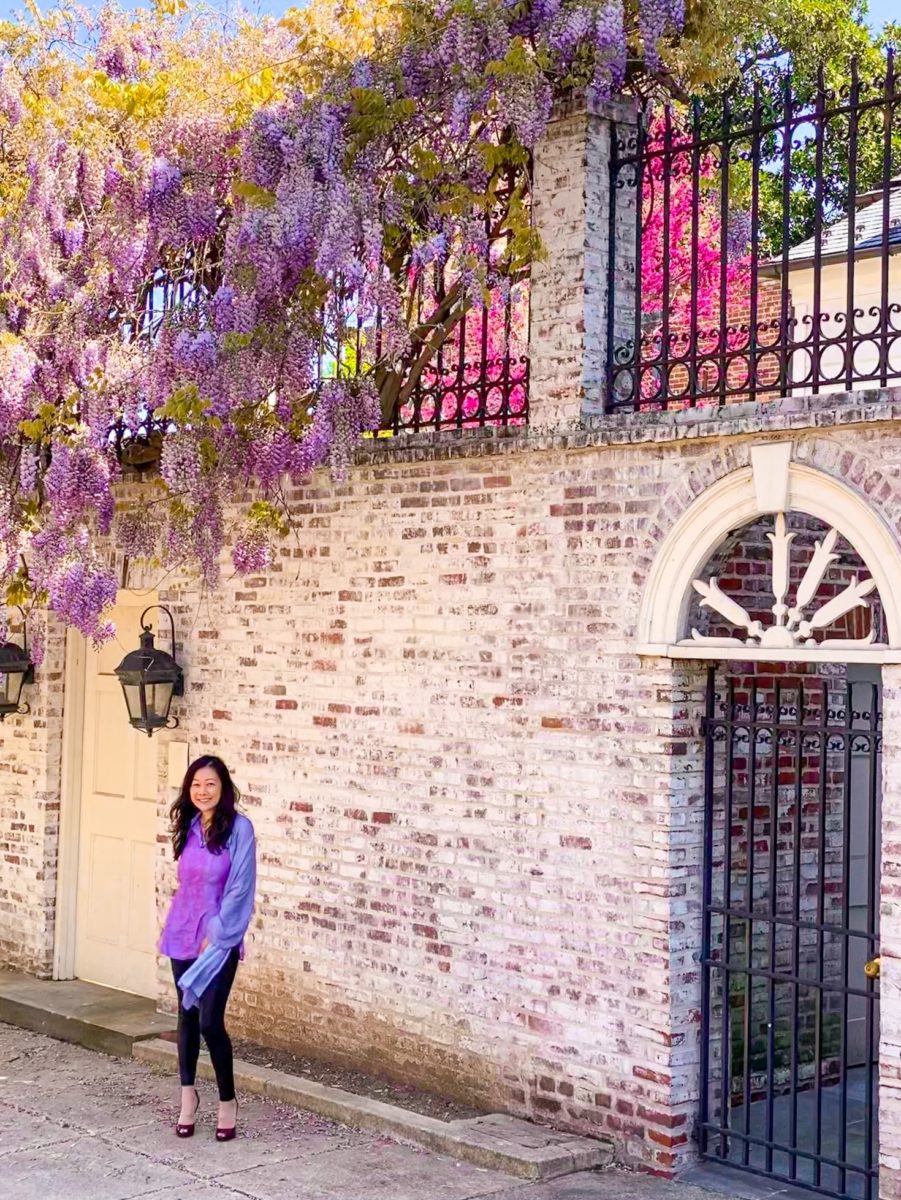
Best location: Dumbarton Oaks, alternatively Linden Vineyards (wine and wisteria)
Bloom time: Early Spring
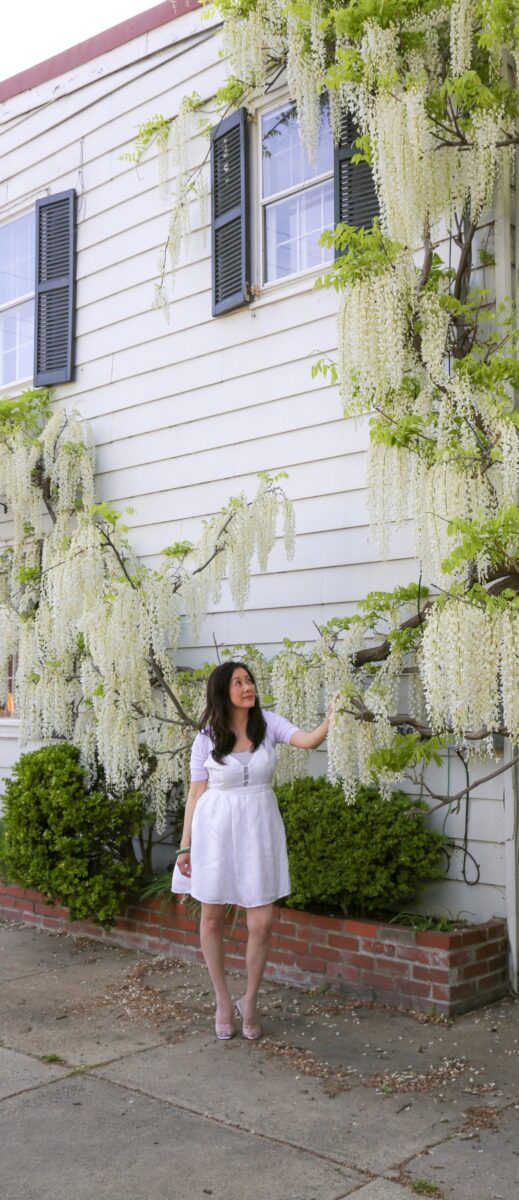
10. 37-foot high Jeff Koons masterpiece
I saved number 10 for last since most tourists will not know about the 37-foot high Jeff Koons striking masterpiece at the @GlenstoneMuseum. His magnificent Split-Rocker has more than 50,000 flowering plants. #SplitRocker2000 is worth the trip alone, but Glenstone offers surprises and delights at every turn. Insider tip: you will need to reserve tickets as the Glenstone is booked in advance. Bonus – The visit is free!
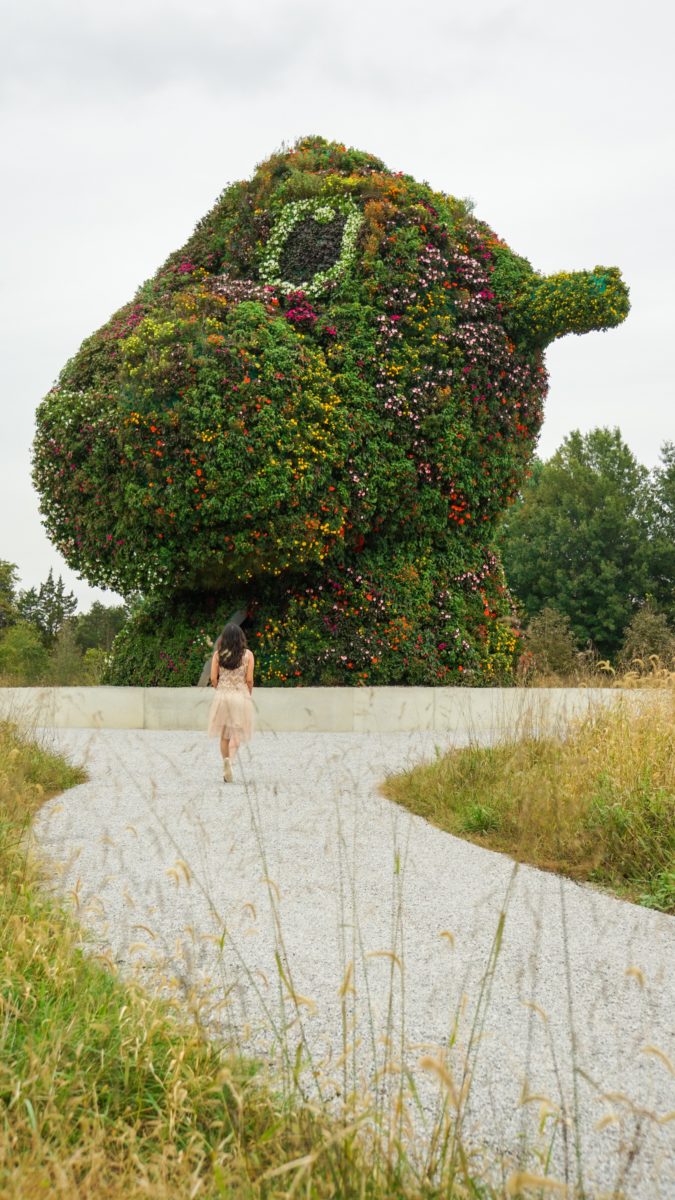
Location: Glenstone Museum
Bloom time: All Season
I hope that you will be able to catch at least one of the “blooms” in these great gardens. Be sure to check with the garden office about when is the best time to visit. It could make the difference between seeing a full bloom and a sparse one.
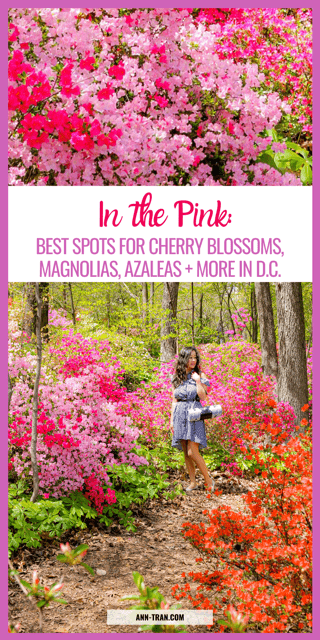
As you walk through life, remember to take the time to stop and smell the flowers. Also, as you walk through life, what is your favorite flower? Read about mine here.
